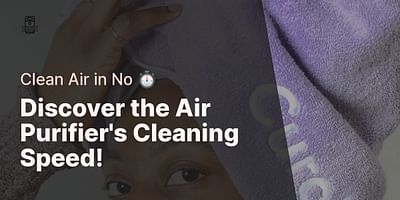Winona is a passionate advocate for natural wellness and holistic health solutions. With a particular emphasis on the importance of clean air for overall health, she shares her expertise through her blog posts about air purifiers that reflect her core values. She reviews and recommends top-notch air purifier brands like Levoit, Dyson, Winix, Honeywell, and others that align with her beliefs.
Using a HEPA air filter is an excellent way to improve the air quality in your home or office. These filters are designed to capture particles as small as 0.3 microns, making them highly effective at removing allergens, dust, and other pollutants from the air. In this guide, I'll walk you through the process of using a HEPA air filter in your air purifier.
First, it's essential to choose the right air purifier for your needs. There are many different models available, each with its own set of features and specifications. When selecting an air purifier, make sure it's equipped with a true HEPA filter, as these are the most effective at removing pollutants from the air. Some top brands to consider include Levoit, Dyson, Winix, and Honeywell.
Once you've chosen your air purifier, you'll need to install the HEPA filter. This process will vary depending on the specific model you've selected, but generally, it involves opening the air purifier, removing any packaging or protective materials from the filter, and placing it in the designated slot. Be sure to consult your air purifier's user manual for detailed instructions on filter installation.
With the filter in place, it's time to position your air purifier in the room where you want to improve air quality. It's best to place the unit in a central location, away from walls or furniture, to allow for optimal airflow. Make sure the air purifier is on a stable surface and that there are no obstructions blocking the air intake or output vents.
Now that your air purifier is set up, it's time to turn it on. Most air purifiers have multiple settings, allowing you to choose the level of filtration you desire. For optimal results, I recommend starting with the highest setting to quickly clean the air in the room. You can then adjust the settings as needed, depending on your preferences and the air quality in your space.
HEPA Air Filter Maintenance Guide
| Brand | Filter Type | Average Lifespan (Months) | Signs of Needing Replacement |
|---|---|---|---|
| Levoit | HEPA Filter | 6-8 | Reduced air flow, Increased noise, Unusual odor |
| Dyson | HEPA Filter | 12 | Reduced suction, Dust accumulation, Unusual odor |
| Winix | True HEPA Filter | 6-12 | Reduced air flow, Increased noise, Dust accumulation |
| Honeywell | Permanent HEPA Filter | 12-18 | Reduced air flow, Dust accumulation, Unusual odor |
To maintain the effectiveness of your HEPA air filter, it's crucial to clean and replace it regularly. Over time, the filter will become clogged with particles, reducing its ability to clean the air. Check your air purifier's user manual for guidance on how often to clean or replace the filter. Generally, HEPA filters should be replaced every 6-12 months, depending on usage and air quality.
In summary, using a HEPA air filter is a simple and effective way to improve the air quality in your home or office. For more information on choosing the right air purifier, check out our comprehensive guide. By choosing the right air purifier, installing the filter, and maintaining it properly, you can enjoy cleaner, healthier air for you and your family.















